From Conflict to Fernandomania: The Dodgers baseball team, Chavez Ravine, and the Los Angeles Mexican-American Community
Abstract
This contribution is a review of the book by baseball historian Erik Sherman, titled Daybreak at Chavez Ravine: Fernandomania and the Remaking of the Los Angeles Dodgers, published by the University of Nebraska Press in 2023. This book examines the Los Angeles Dodgers baseball team’s move to Chavez Ravine neighborhood in the 1950s, which caused the forced displacement of over 1,800 Mexican-Americans and led to significant resentment within the community. The book highlights how this animosity was reversed by the arrival of Fernando Valenzuela from Mexico in the 1980s. Valenzuela’s exceptional pitching and charismatic presence ignited “Fernandomania”, a cultural phenomenon that not only captivated fans but also helped repair the relationship between the Dodgers and the Mexican-American community, rekindling their connection to their city team.
Keywords: Baseball history; Los Angeles Dodgers; United States; Mexican American; Social Justice
Du conflit à la Fernandomania : L’équipe de baseball des Dodgers, Chavez Ravine, et la communauté mexicaine-américaine de Los Angeles
Résumé
Cette contribution est une recension de l'ouvrage de l'historien du baseball Erik Sherman, intitulé Daybreak at Chavez Ravine: Fernandomania and the Remaking of the Los Angeles Dodgers, publié par les Presses de l’Université du Nebraska en 2023. Ce livre examine le déménagement de l'équipe de baseball des Los Angeles Dodgers dans le quartier de Chavez Ravine dans les années 1950, qui a entraîné le déplacement forcé de plus de 1 800 Mexicain-Américains et provoqué un profond ressentiment au sein de la communauté. L'ouvrage souligne comment cette animosité a été inversée par l'arrivée de Fernando Valenzuela, un joueur mexicain qui rejoint l’équipe dans les années 1980. Le talent exceptionnel de Valenzuela en tant que pitcher (lanceur) et sa présence charismatique ont déclenché la « Fernandomania », un phénomène culturel qui a non seulement captivé les fans de baseball, mais a aussi contribué à réparer la relation entre les Dodgers et la communauté mexicaine-américaine, renforçant ainsi leur connexion avec l’équipe de leur ville.
Mots-clés : Histoire du baseball ; Dodgers de Los Angeles ; États-Unis ; Mexicain-Américain ; Justice sociale
------------------------------
Anne-Lise Boyer
Postdoctoral Research Associate
The University of Arizona, College of Architecture, Planning and Landscape Architecture, Tucson, Arizona, USA.
Cette adresse e-mail est protégée contre les robots spammeurs. Vous devez activer le JavaScript pour la visualiser.
From Conflict to Fernandomania: The Dodgers baseball team, Chavez Ravine, and the Los Angeles Mexican-American Community
In the spring of 2024, the contentious history of Chávez Ravine, where the Los Angeles Baseball team’s Dodger Stadium was constructed in the late 1950s, resurfaced. A proposed state law would require the City of Los Angeles to build a monument to honor the families—primarily Mexican-American—who were displaced to make room for the stadium. The bill would also call for the establishment of a task force to examine reparations for the significant and enduring inequalities experienced by those families and their descendants (Editorial, LA Times, May 9, 2024).
The construction of Dodger Stadium, following the team’s relocation from Brooklyn, New York, led to the displacement of 1,800 Mexican-Americans. At the time, this area was one of the few places on the outskirts of Los Angeles where Mexican-Americans could live in a city that broadly discriminated against people of color through practices like restrictive covenants and redlining. In the late 1940s, Los Angeles city officials identified Chávez Ravine as an ideal site for a public housing project. Many families reluctantly sold their homes to the city, often for less than fair market value, under the promise that they could return to new, affordable homes. However, during the early 1950s, the political climate shifted rapidly, with rising fears of communism and a backlash against public housing projects. Conservative politicians, real estate interests, and urban growth coalitions gained significant power, leading to the abandonment of the public housing project. The city then offered the area to Dodgers’ owner Walter O’Malley as an incentive to move the team to Los Angeles, despite the socio-political tensions this decision could cause. However, a few families who had not yet left Chávez Ravine refused to vacate their homes, resulting in a series of confrontations. The most dramatic incident occurred in May 1959, when Los Angeles County sheriff’s deputies forcibly evicted the remaining residents. The images of this event became a symbol of the injustice faced by the Mexican-American community, leaving a deep and lasting scar. For instance, as a form of protest, Cesar Chávez, the prominent civil rights and labor leader, along with many other Chicano activists—members of the Mexican-American civil rights movement advocating for social and political empowerment—never set foot in the stadium.
This event and its surrounding history have led to a number of works in History, Chicana/o Studies, and Urban Planning (Henderson, 1980; Parson, 1993; McCue, 2012; Leiva, 2020; Platt, 2023). In his book, Daybreak at Chavez Ravine: Fernandomania and the Remaking of the Los Angeles Dodgers, baseball historian Erik Sherman (2023) offers a different perspective. He focuses on the career of star baseball player Fernando Valenzuela and his role in the success of the Dodgers, embodying a form of reconciliation between Mexican-Americans and their city’s team. The book consists of 25 short chapters, each detailing the steps that led to Fernando Valenzuela’s success—both his sports achievements and his popularity among Mexican-American fans. His success elevated him to cultural icon status, and his jersey is still widely worn by Mexican-American Dodger fans today (Sherman, 2023: Figure 8 and 9, page 145), even though he retired almost 30 years ago.
To trace the history of Fernando Valenzuela and his impact on the Mexican-American community, the historian conducted extensive interviews with those who were closely associated with him throughout his career. This included the Dodgers’ general manager at the time, team broadcasters in both English and Spanish, sportswriters from that era, Cesar Chavez’s personal assistant, the president of the United Farm Workers labor union, teammates, the Dodgers scout who first signed Valenzuela, and Latino players who grew up admiring him. However, Fernando Valenzuela himself, who has consistently declined to participate in the writing of a book or movie script about his life, was not interviewed.
Chapters 7 to 21 form the core of the book, concentrating on the pivotal year of 1981—the birth year of "Fernandomania." Valenzuela was discovered by Los Angeles Dodgers scout Mike Brito while playing for the Leones de Yucatán, a team in the Mexican League, in the late 1970s, and burst onto the Major League Baseball scene in 1981. He began to have success with his signature pitch, that even for the era, was unconventional - the “screwball.” His remarkable rookie season was characterized by a series of dominant pitching performances, captivated fans and made a significant impact. And the Dodgers won the World Series in 1981. As a Mexican-born player succeeding in Major League Baseball, Valenzuela represented a significant cultural milestone. When he first arrived in the U.S., he did not speak English. And, this language barrier added to his mystique and the fascination surrounding him during "Fernandomania." He communicated through an interpreter early on and often relied on teammates or coaches to help translate. He then became a symbol of pride for Mexican-Americans and other Latinos, demonstrating that individuals from their community could achieve excellence at the highest levels of American sports. Valenzuela’s charisma and relatable background resonated deeply with the Mexican-American community, fostering a strong emotional connection. His success helped bridge cultural gaps and promote a sense of inclusion, serving as an inspirational and positive representation of Mexican-Americans in mainstream American culture.
In the last chapters, Sherman describes how over time, as Valenzuela’s performance waned, the Dodgers and Valenzuela’s management made the decision to part ways. In Chapter 24, titled "The Long Road Back to Glory," we see how Valenzuela goes from hitting rock bottom and being sold to the Jalisco Charros of the Mexican League (often seen as a last chance for former Major League players trying to continue playing or potentially regain the interest of a new American team) to signing with the San Diego Padres in 1995. Due to the proximity to Mexico, Mexican residents would cross the border to see Valenzuela pitch, filling up the stadium. It was based on these successes with the Padres that he retired as a Major Leaguer in 1997 after a long career.
The book’s interest lies in its detailed analysis of the Dodgers’ success in Southern California and among Mexican-Americans, despite their historical dispossession, as well as more broadly within the Hispanic community in the United States and Latin America beyond the southern U.S. border. The book’s thesis is further interesting in the way it approaches Valenzuela as a kind of symbolic character and how this was dealt with at the time. Valenzuela was at once charismatic, yet shy and humble, and of course highly skilled. Yet, he was described as "chubby" with an "imperfect body," and in part, this allowed Hispanic people to identify with him, thus, Sherman argues, facilitating the reconciliation of Mexican-Americans with the Dodgers. However, it is regrettable that this thesis is repetitively emphasized throughout the chapters, which describe a "Mardi Gras" atmosphere in the stands due to the growing Hispanic population, without offering deeper analysis. The descriptions are rich, but at times, a more thorough cultural, let alone political economic analysis is lacking. Additionally, the cultural and sporting significance of the Mexican professional baseball league, which has been running since 1925, could have added interesting depth, but was not explored. Instead, the focus is on how Valenzuela helps, in a way, Mexicans to integrate into American culture. Unfortunately, it is difficult to not read this as a shortcoming of the text, revealing an underlying white, Anglo-American perspective. While there is no doubt of the book’s good intentions to highlight the Mexican-American community, the work tends to travel well-trodden paths. However, this will be essential reading for those wishing for a detailed account of Valenzuela’s career and the broad contours of the cultural moment of which it was a part.
References
« What does Los Angeles owe the people who lost their homes in Chavez Ravine? More than an apology ». May 9, 2024, Los Angeles Times. [URL: https://www.latimes.com/opinion/story/2024-05-09/editorial-what-does-los-angeles-owe-people-who-lost-their-homes-in-chavez-ravine-more-than-an-apology]
Henderson Cary S. (1980). « Los Angeles and the Dodger War, 1957-1962. » Southern California Quarterly, Vol. 62, n°3 : 261-289.
Leiva Priscilla (2020). « The Complicated Relationship Between Latinos and the Los Angeles Dodgers. » Smithsonian Magazine, October 22, 2020. [URL: https://www.smithsonianmag.com/smithsonian-institution/complicated-relationship-between-latinos-and-los-angeles-dodgers-180976109/#:~:text=The%20Complicated%20Relationship%20Between%20Latinos%20and%20the%20Los%20Angeles%20Dodgers]
McCue Andy (2012). « Barrio, bulldozers, and baseball: the destruction of Chavez Ravine. » NINE: A Journal of Baseball History and Culture, Vol. 21, n°1 : 47-52.
Parson Don (1993). « ‘This Modern Marve’: Bunker Hill, Chavez Ravine, and the Politics of Modernism in Los Angeles. » Southern California Quarterly, Vol. 75, n°3/4 : 333-350.
Platt Lorne (2023). « Building Dodger Stadium: Walter O’Malley’s search for nature and modernism in Los Angeles. » Journal of Urban Design, Vol. 28, n°5: 489-505.
Sherman Erick (2023). Daybreak at Chavez Ravine: Fernandomania and the Remaking of the Los Angeles Dodgers. Lincoln, NE, USA : University of Nebraska Press.
Pour citer cet article:
Anne-Lise Boyer, « From Conflict to Fernandomania: The Dodgers baseball team, Chavez Ravine, and the Los Angeles Mexican-American Community », RITA [en ligne], n°17 : septembre 2024, mis en ligne le 30 septembre 2024. Disponible sur: http://www.revue-rita.com/dossier-thematique-n-17-expressions-libres/from-conflict-to-fernandomania-the-dodgers-baseball-team-chavez-ravine-and-the-los-angeles-mexican-american-community-anne-lise-boyer.html











 Avec le soutien du LER-Université Paris 8
Avec le soutien du LER-Université Paris 8